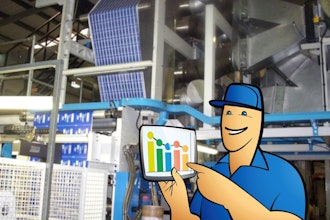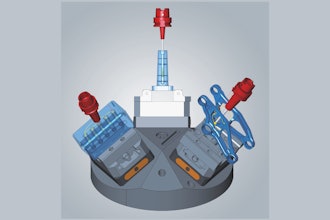As we near the end of 2015, it’s only natural to take a look at the past 12 months to identify the year’s successes and highlights, while understanding areas for improvement. But as I reminisced on 2015, it got me thinking about the Enterprise Resource Planning (ERP) market in general, and I came to the conclusion that ERP has never been more exciting than right now.
Bolstered by new innovation, ERP has become an even stronger business asset, and this is changing how manufacturing companies define successful ERP implementations.
Manufacturers are eager to harness the power of cloud computing to implement cost-efficient IT solutions that ultimately drive improved bottom-line benefits to their organizations. At the same time, these companies are seeking to understand how to leverage the vast amounts of ERP data. More specifically, how they can easily access, manage and interpret the reams of information scattered throughout their enterprises to make faster, more informed business decisions.
Manufacturers (and all companies for that matter) always look for ways to innovate, and part of this is ensuring they’re working with the latest features and/or apps — whether it’s mobile, analytics, CRM, cloud, etc. Outdated technology and infrastructure is akin to giving the competition a leg up.
As ERP has evolved, it’s providing companies and users with capabilities that didn’t exist previously. Mobile, social, analytics, business intelligence, and cloud-based computing options are now more accessible to mid-market companies, and users are getting so much more out of an ERP system.
All of this is why ERP is flourishing.
Cloud
The adoption of cloud-based software continues to grow at a significant rate, and its myriad benefits are clear — cost savings, convenience, manageability, security and improved infrastructure management, to name a few.
The cloud enables manufacturing companies to deliver ERP software to customers, while eliminating excess hardware and maintaining control over system integrations. As a result, the complexity of providing the highest level of customer service is reduced significantly. Through cloud-based ERP, all software components are hosted by the ERP supplier or ERP affiliate, thereby eliminating the complications of upgrades and hardware installations.
With greater flexibility, lower infrastructure cost, built in disaster recovery and high availability and lower operations overhead, manufacturers are flying high in the cloud.
Mobile
Anytime, anywhere access to enterprise applications and data is today’s norm. Manufacturing companies are using mobile solutions to empower staff with real-time analytics, reports and information through smartphones and tablets. Mobile is allowing customers to interact with clients, products, inventory and more through apps that supports an unparalleled level of customer service.
Analytics
Analytics help manufacturing companies seize, manage and harness actionable insights for business analysis by uncovering existing patterns across the business. It identifies things such as what is most profitable or unprofitable and why, which customers spend more and why and which employees are the most productive — all information that is crucial to a company’s success.
While detailed data is great for drill-down analysis, it does not provide the necessary insight to make decisions quickly and produce action. Analytics can also help companies sort through the clutter of data to identify the most useful fragments, such as what is selling where and what is profitable in specific markets.
Properly implementing an analytics strategy allows companies to turn their data into immediately meaningful and actionable information for business analysis purposes. Without leveraging analytics to summarize large amounts of detailed data, companies are left with an enormous amount of detailed data simply displayed in another format, which is no easier to interpret than before.
The ERP market is hot, as noted in a Computer Economics report which shows companies investing in ERP at a significant rate. ERP investments and implementations will continue to flourish — it’s just a matter of companies understanding how to extract the most value from them.
How is your company benefiting from ERP software?
Pete Zimmerman is a Manufacturing Segment Manager at VAI.






















